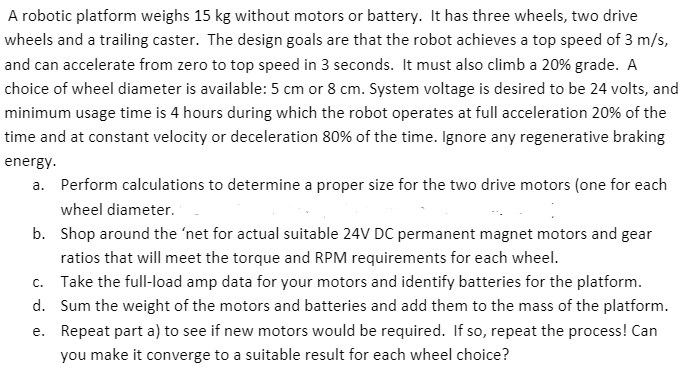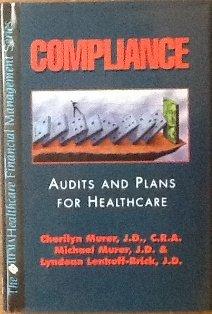

A robotic platform weighs 15 kg without motors or battery. It has three wheels, two drive wheels and a trailing caster. The design goals are that the robot achieves a top speed of 3 m/s, and can accelerate from zero to top speed in 3 seconds. It must also climb a 20% grade. A choice of wheel diameter is available: 5 cm or 8 cm. System voltage is desired to be 24 volts, and minimum usage time is 4 hours during which the robot operates at full acceleration 20% of the time and at constant velocity or deceleration 80% of the time. Ignore any regenerative braking energy. a. Perform calculations to determine a proper size for the two drive motors (one for each wheel diameter. b. Shop around the 'net for actual suitable 24V DC permanent magnet motors and gear ratios that will meet the torque and RPM requirements for each wheel. C. Take the full-load amp data for your motors and identify batteries for the platform. d. Sum the weight of the motors and batteries and add them to the mass of the platform. e. Repeat part a) to see if new motors would be required. If so, repeat the process! Can you make it converge to a suitable result for each wheel choice? Take your best motor from problem 1 and develop a set of constants for it based on any manufacturer data you can gather. The intent is to calculate Ra, La, Kt, Ka, Gear Ratio, J, B for the motor and gearhead and total mass of the robot. a. Write a Scilab or MATLAB program that tests your constants for a 3 second run at full voltage and no-load (no robot connected). Compare your no-load RPM at the end of the run with manufacturer no load RPM data. b. Repeat the test run with the robot mass added to the J and B constants. Does the robot reach 3 m/s in the 3 second run? A robotic platform weighs 15 kg without motors or battery. It has three wheels, two drive wheels and a trailing caster. The design goals are that the robot achieves a top speed of 3 m/s, and can accelerate from zero to top speed in 3 seconds. It must also climb a 20% grade. A choice of wheel diameter is available: 5 cm or 8 cm. System voltage is desired to be 24 volts, and minimum usage time is 4 hours during which the robot operates at full acceleration 20% of the time and at constant velocity or deceleration 80% of the time. Ignore any regenerative braking energy. a. Perform calculations to determine a proper size for the two drive motors (one for each wheel diameter. b. Shop around the 'net for actual suitable 24V DC permanent magnet motors and gear ratios that will meet the torque and RPM requirements for each wheel. C. Take the full-load amp data for your motors and identify batteries for the platform. d. Sum the weight of the motors and batteries and add them to the mass of the platform. e. Repeat part a) to see if new motors would be required. If so, repeat the process! Can you make it converge to a suitable result for each wheel choice? Take your best motor from problem 1 and develop a set of constants for it based on any manufacturer data you can gather. The intent is to calculate Ra, La, Kt, Ka, Gear Ratio, J, B for the motor and gearhead and total mass of the robot. a. Write a Scilab or MATLAB program that tests your constants for a 3 second run at full voltage and no-load (no robot connected). Compare your no-load RPM at the end of the run with manufacturer no load RPM data. b. Repeat the test run with the robot mass added to the J and B constants. Does the robot reach 3 m/s in the 3 second run








